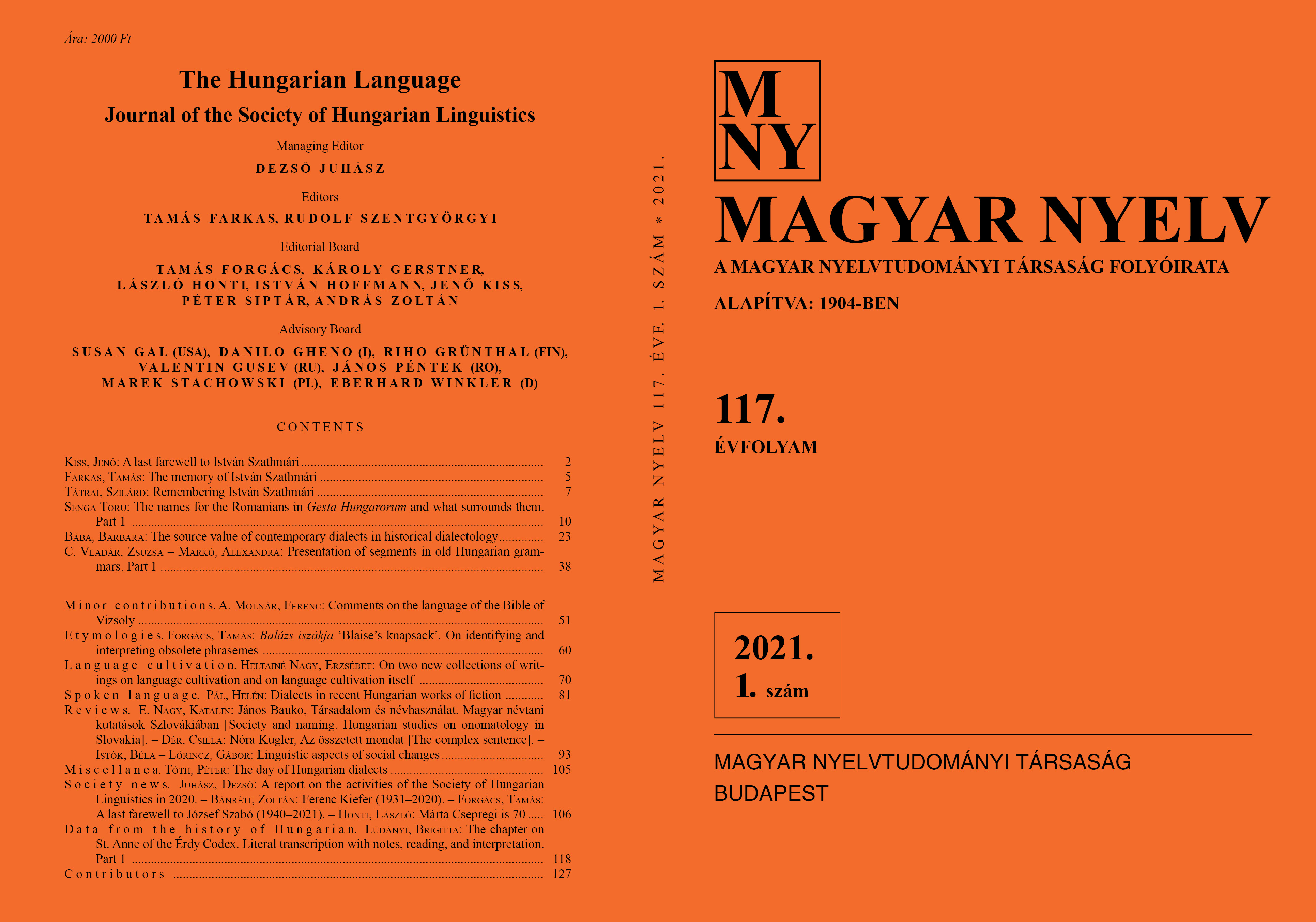Presentation of segments in old Hungarian grammars
Part 1
DOI:
https://doi.org/10.18349/MagyarNyelv.2021.1.38Keywords:
early Hungarian grammars, acoustic and articulatory phonetics, phonetic terminology, history of phonetics, Hungarian segmentsAbstract
Early Hungarian grammars and the Hungarian grammatical literature written in Latin contain numerous descriptions related to the Hungarian inventory of segments as a whole, or in the context of individual phonemes. One of the purposes of this paper is to present the terminology that grammar authors used to characterize the Hungarian segment inventory. The study also examines the origin and variations of the terminology in the works of the individual authors, as well as the contemporary assumptions about the set of segments, their articulation and the psychoacoustic image they evoke. Another purpose of the paper is to study how the results of modern experimental phonetics can correlate with the metaphorical descriptions applied by the early grammarians, and what kinds of articulatory-auditory experiences supported by experimental data may have led to the development of the terminology used for the characterization of segments.
Downloads
Published
Issue
Section
License
Copyright (c) 2024 Zsuzsa C. Vladár, Alexandra Markó

This work is licensed under a Creative Commons Attribution-NonCommercial-NoDerivatives 4.0 International License.
Magyar Nyelv is a Diamond Open Access periodical. Documents can be freely downloaded and duplicated in an electronic format, and can be used unchanged and with due reference to the original source. Such use must not serve commercial purposes. In the case of any form of dissemination and use, Hungarian Copyright Act LXXVI/1999 and related laws are to be observed. The electronic version of the journal is subject to the regulations of CC BY-NC-ND (Creative Commons – Attribution-NonCommercial-NoDerivatives).
The journal permits its authors, at no cost and without any temporal limitation, to make pre-print copies of their manuscripts publicly available via email or in their own homepage or that of their institution, or in either closed or free-for-all repositories of their institutions/universities, or other non-profit websites, in the form accepted by the journal editor for publication and even containing amendments on the basis of reviewers’ comments. When the authors publicize their papers in this manner, they have to warn their readers that the manuscript at hand is not the final published version of the work. Once the paper has been published in a printed or online form, the authors are allowed (and advised) to use that (post-print) version for the above purposes. In that case, they have to indicate the exact location and other data of the journal publication. The authors retain the copyright of their papers; however, in the case of an occasional secondary publication, the bibliographical data of the first publication have to be included.



